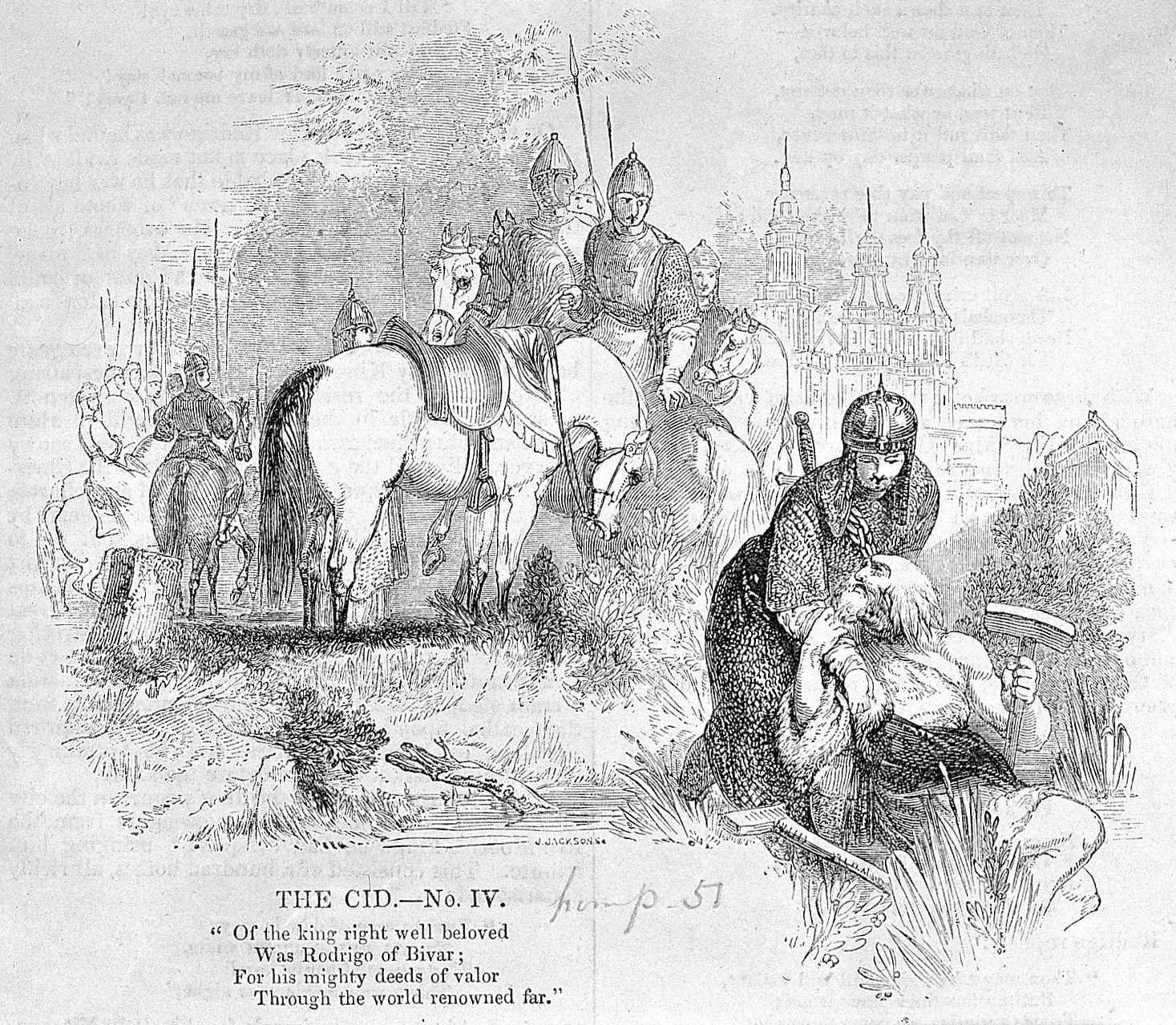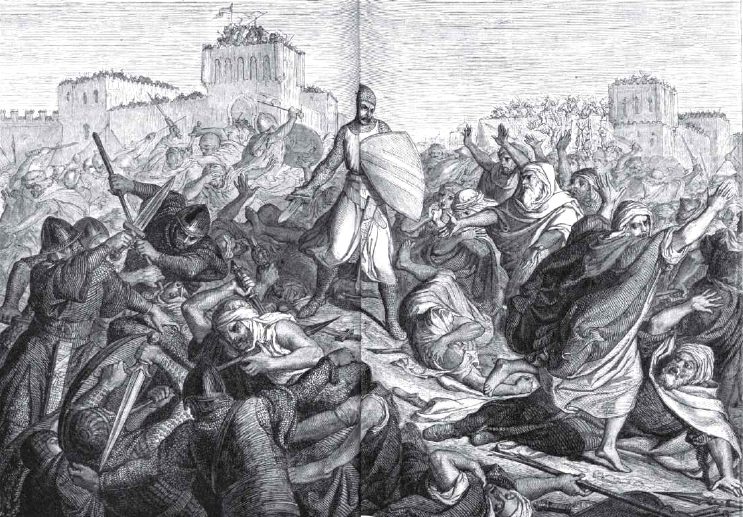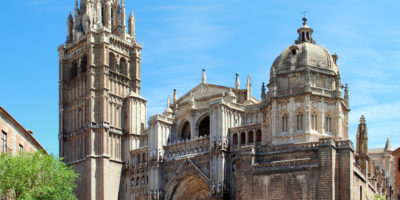
El Cid’s Statute. Photo by Brocken Inaglory. Wikimedia Commons.
Top 10 Fascinating Facts about El Cid
Rodrigo Díaz de Vivar was a Castilian knight and warlord in medieval Spain. Fighting with both Christian and Muslim armies during his lifetime, he earned the Arabic honorific al-sīd, which would evolve into El Cid (“the lord”), and the Spanish moniker El Campeador (“the champion”).
The man, the myth, the legend, El Cid. He was a Castilian Knight in medieval Spain who rose to power, lost his power, became an enemy of his homeland, and eventually came to rule his own land.
The exact date of El Cid’s birth is unknown. Based on his participation in 1063 at the Battle of Graus, however, most historians believe that El Cid was born eighteen to twenty years earlier between 1043 and 1045, in Vivar, a small town about six miles north of Burgos, the capital of Castile. Historical records show that El Cid’s father was Diego Laínez, who was part minor nobility of Castile. Let’s look at the Top 10 Fascinating Facts about El Cid.
1. He was known by many names

Photo by Penny Magazine Wellcome. Wikimedia Commons.
El Cid is known as Rodrigo Diaz de Vivar, and the name the Moors (Arabs in medieval Spain area) called him, El Cid, which translates to The Lord, but there are a few more names he went.
He had a nickname, so if Rodrigo was too formal for someone, they could call him Ruy, a name he goes by in a 1980s anime about El Cid’s childhood. While the Moors
called him El Cid, the Christians had a different name for him, El Campeador, which means “The Battlefielder” or “The Warrior.” Truly, he was a fierce fighter to earn a title like.
2. El Cid was exiled from Spain
El Cid had a complicated relationship with King Alfonso, to say the least. It all started with Alfonso’s father, King Ferdinand. El Cid served Ferdinand, but when Ferdinand died, he left part of the kingdom to Alfonso, and the other, smaller part to Alfonso. The brothers waged war on each other, and El Cid took Sancho’s side. Then Sancho died, with no children, leaving Alfonso as the only possible heir.
He then served Alfonso, but lost his title as a friend of the king, and his influence declined. He was naturally bitter about that, especially since he was made to marry Alfonso’s niece, allying El Cide to the royal line. El Cid acted against the will of the king one too many times, and so he was exiled.
3. His warhorse was very important to him
El Cid had his own special warhorse named Babieca, a fun fact about El Cid. There are a few different origin stories to this horse. One story says he was a small, weak horse he picked out from a monastery as a present and raised into a strong warhorse.
Another story says Babieca was already a strong warhorse, and El Cid got him as part of the fight to become the King’s champion. Yet another story says the horse was a gift from a Barbarian. He later on asked to be buried with the horse.
4. El Cid has featured in many films
“El Cantar de Mio Cid” wasn’t the end of media inspired by El Cid. El Cid has shown up in works of fiction from the 12th Century all the way up until 2016. He was written about in several plays, several operas, two films, and anime, a Spanish sci-fi show, and the games Age of Empires and Medieval Total War.
5. El Cid’s story was different from the legends told

El Cid’s Statute. Photo by CarlosVdeHabsburgo. Wikimedia Commons.
The legend of El Cid was different than the actual man. During his exile, instead of conquering Moorish lands to regain favor with the king, he fights against the king until he is pardoned.
The whole bit about his daughters marrying abusive husbands doesn’t seem to be true, and the story makes him out to be very hesitant to fight for Sancho, when this doesn’t seem to be the case, an interesting El Cid fact.
6. He was married to Jimena de Gormaz
The Cid was married in July 1074 to Afonso’s kinswoman Jimena de Gormaz (spelled Ximena in Old Castilian), the daughter of the Count of Oviedo. This was probably on Afonso’s suggestion; a move that he probably hoped would improve relations between him and El Cid. Together El Cid and Ximena had three children.
Their daughters, Cristina and María, both married high nobility; Cristina, to Ramiro, lord of Monzón and bastard descendant of kings of Navarre; María, first to Infante of Aragon and second to Ramón Berenguer III, count of Barcelona. El Cid’s son, Diego Rodríguez, was killed while fighting against the invading Muslim Almoravids from North Africa at the Battle of Consuegra.
7. Legend has it that he won a battle dead

El Cid. Photo by Unknown Author. Wikimedia Commons.
Legend has it that after El Cid died he was strapped onto his horse and ridden into battle. The enemy was so afraid of the invincible rider that they all went back to their boats and El Cid won the battle dead on a horse. The legend also tells that only his wife knew because she realized that if the men realized their beloved leader was dead, they would surely lose.
8. His sword has been preserved in a museum
El Cid’s sword, “Tizona,” can still be seen in the Army Museum (Museo del Ejército) in Madrid. Soon after his death it became one of the most precious possessions of the Castilian royal family.
In 1999 a small sample of the blade underwent metallurgical analysis that partially confirmed that it was made in Moorish Córdoba in the eleventh century, although the report does not specify whether the larger-scale composition of the blade identifies it as Damascus steel.
9. El Cid was respected by both Muslims and Christians
El Cid enjoyed the unusual honor of being respected by Christians and Muslims alike, an honor that few others can claim with the exception of such men as Saladin and Richard the Lionheart.
At the time, Christians thought Muslims to be servants of Satan, and when the recovery of the whole of Spain was regarded as Christian duty. Success in winning back parts of Spain was a contributing factor in launching the Crusades, as success emboldened the pope to believe that the Holy Land could also be recovered.
10. El Cid had unique battle techniques

El Cid. Photo by Gilberto Gomes. Wikimedia Commons.
El Cid’s army had a novel approach to planning strategy as well, holding what might be called brainstorming sessions before each battle to discuss tactics. They frequently used unexpected strategies, engaging in what modern generals would call psychological warfare; waiting for the enemy to be paralyzed with terror and then attacking them suddenly, distracting the enemy with a small group of soldiers.
El Cid had a humble personality and frequently accepted or included suggestions from his troops. He remained open to input from his soldiers and to the possibility that he himself was capable of error.
Planning a trip to Paris ? Get ready !
These are Amazon’s best-selling travel products that you may need for coming to Paris.
Bookstore
- The best travel book : Rick Steves – Paris 2023 – Learn more here
- Fodor’s Paris 2024 – Learn more here
Travel Gear
- Venture Pal Lightweight Backpack – Learn more here
- Samsonite Winfield 2 28″ Luggage – Learn more here
- Swig Savvy’s Stainless Steel Insulated Water Bottle – Learn more here
Check Amazon’s best-seller list for the most popular travel accessories. We sometimes read this list just to find out what new travel products people are buying.








